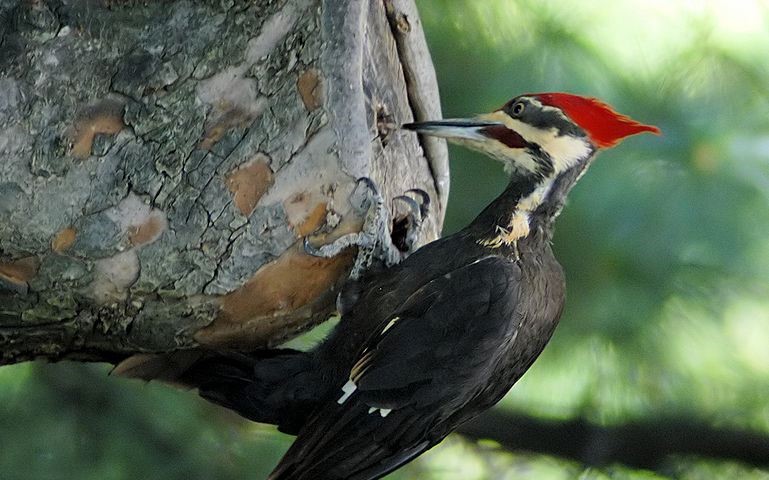Cutting trees, pushing birds, tourists away
Holding a long pole in her hands, Mathilda Samson moves from one tree to another in search of dry twigs. The pole was specially fitted with a branch so that she hooks dry twigs and pull them down as she builds a bundle of firewood.
The fact that she has to go around many trees before she gets a sizeable collection to last her at least a week, tells a story of over harvesting in this particular part of the forest.

After a successful wood hunt, she happily leaves for her home with the bundle perched on her head.
Samson comes from Malikete Village in Traditional Authority (T/A) Masumbankhunda and Dzalanyama Forest Reserve is where she comes to collect firewood and resources such as fruits and mushrooms.
Almost all households in her village and neighbouring ones depend on Dzalanyama Forest for fuel wood.
In the distance, the sound of an axe cutting wood can be heard. This was the axe of Moyenda Ganizani from Ming’ongo Village, T/A Kalolo in Lilongwe who had paid for a ticket to cut wood from the forest.
The ticket authorises him to cut any dry wood and he sees to it that he collects enough to carry on his bicycle.
Women and men legally collecting firewood in Dzalanyama Forest Reserve is a regular sight.
While this may seem a small issue, the Dzalanyama ecosystem is affected in different ways.
For instance, bark beetles are being deprived of a good livelihood since they depend on dead tree barks.
The sterling woodpecker also makes its nest in dry wood and the continual harvesting of the same is depriving this bird of its natural habitat.
This bird is now flying miles into the forest to look for ideal wood to peck holes for its nest, leaving bird watching tourists wondering where else to go.
Jimmy Katengu, a birding tourism expert working as a tour and field guide with Land and Lake Safaris, has expressed disappointment with the growing destruction of natural bird habitat. This, according to him, has a direct impact on his career as well as tourists who come to appreciate the bird species herein.
Birding tourism is a niche which brings in tourists from far away as Europe just to watch specific bird species that are exclusively local or migratory.
Katengu fears that if the trend is left unchecked, it can lead most attractive species of birds migrating to other countries.
He said: “At the rate things are going, I wonder if we are going to have tourists in this niche of tourism. This is scary and is threatening even my career altogether.”
Katengu said other bird species being threatened out of Dzalanyama are miombo rock thrush and bomb fly catcher.
Another bird species is Akalat which can only be seen at Nkhwazi Forest in northern Malawi. Meanwhile, loggers and timber millers are busy felling trees in the forest.
Dzalanyama Forest Reserve is under the management of Dzalanyama Catchment Conservation Trust (DCCT) which was formed in 2021.
Madalitso Salim, a member of the DCCT secretariat, said they are working with community members to motivate them to co-manage the forest with the trust.
One of the ways is the introduction of clubs to have beehives in the forest.
Said Salim: “When these groups are taking care of the beehives they also protect the forest because they know that once the trees disappear, they will have nowhere to put their hives.”
So far there are three groups which are harvesting honey they are selling to honey cooperatives for processing for the international market.





